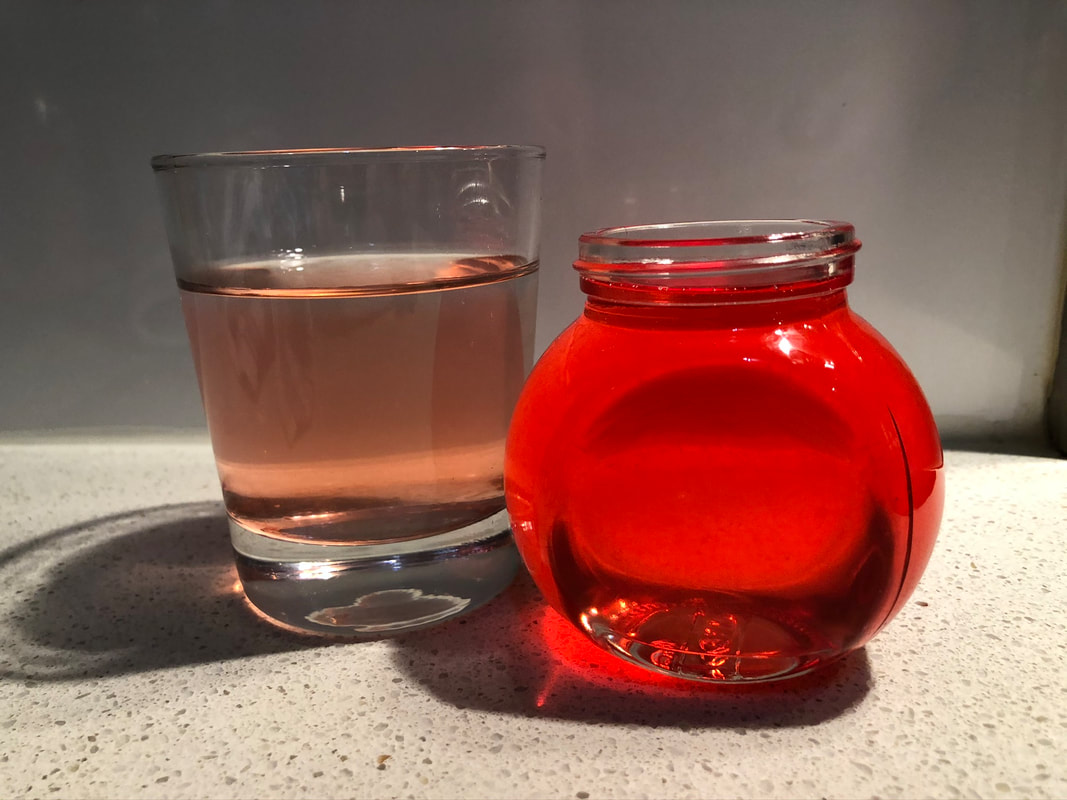Historical. Gluten Free. Dairy Free. Vegan.Rosewater syrup has many modern and historical uses. I am using it as a cordial, but it has been used in sweets, pastries and all manner of dishes as a spice.
Once my Dad's roses bloom in August, I will be trying my hand at making rosewater from scratch. This is the quick version. Ingredients 2 parts rosewater to 1 part sugar e.g. 1 cup of rosewater to 1/2 cup of sugar I use Cortas brand rosewater for this as it keeps its flavour when used in this kind of reduction. Method Simmer on medium heat in small saucepan until a light syrup is formed. Pour into a sterilised glass jar or bottle. Keeps okay at room temperature. Notes Although not found in historical recipes, adding the juice of half a small lemon (make sure it has no 'bits' / pith) to each cup of rosewater enhances the flavour. I have also added red food colouring to the modern version. Background The following is a thirteenth century (13th C) for rosewater syrup. The Recipe for Making a Syrup of Julep Take five ratls of aromatic rosewater, and two and a half of sugar, cook all this until it takes the consistency of syrups. Drink two ûqiyas of this with three of hot water. Its benefits: in phlegmatic fever; it fortifies the stomach and the liver, profits at the onset of dropsy, purifies and lightens the body, and in this it is most extraordinary, God willing. http://www.daviddfriedman.com/Medieval/Cookbooks/Andalusian/andalusian10.htm Note:
'Libre de Diversis Medicinis' in the Thornton Manuscript (MS. Lincoln Cathedral, A.5.2). Edited by Margaret Sinclair Ogden. Published for the Early English Text Society by Humphrey Milford, Oxford University Press. Amen House, E.C. 4. England. 1938. Text circa early 1400 CE. Page 60. Posted by "Crystal A. Isaac" "Rose Syrup: Tak an vnce or twa of roses & sethe tham in water to the ij partis be sothen in. Than clene it thurgh clathe & do suger ther-to & sethe it to it be thikk as hony & vse as thu dose the tother." Florilegium: Rose Syrup Serop of Roses – Rose Jam Elinor Fettiplace’s Recipt Book, 1604 ‘To Make A Serop Of Roses. Take damask rose buds 6 handfuls,. & cut off the tops, and take a quart of fair running water, & put the roses therein. Put them in a basin & set them over the fire, that the water may be warm one day and night. The in the morning squeeze the roses hard between your hands out of the water, & put in as many fresh, & let them stand still on the fire. This do 9 times, then take our our roses, clean out of the water, & put in as much sugar as will make it sweet. Boil til it comes to a syrup; you must put to every pint a pound of sugar.’p234 The Tudor Cookbook: From Gilded Peacock to Calves’ Feet Pie by Terry Breverton.
0 Comments
Your comment will be posted after it is approved.
Leave a Reply. |
Dr. Nicola BoydI am trying to teach myself to be a medieval and renaissance confectioner. This has led to an interest in modern deserts too. |


